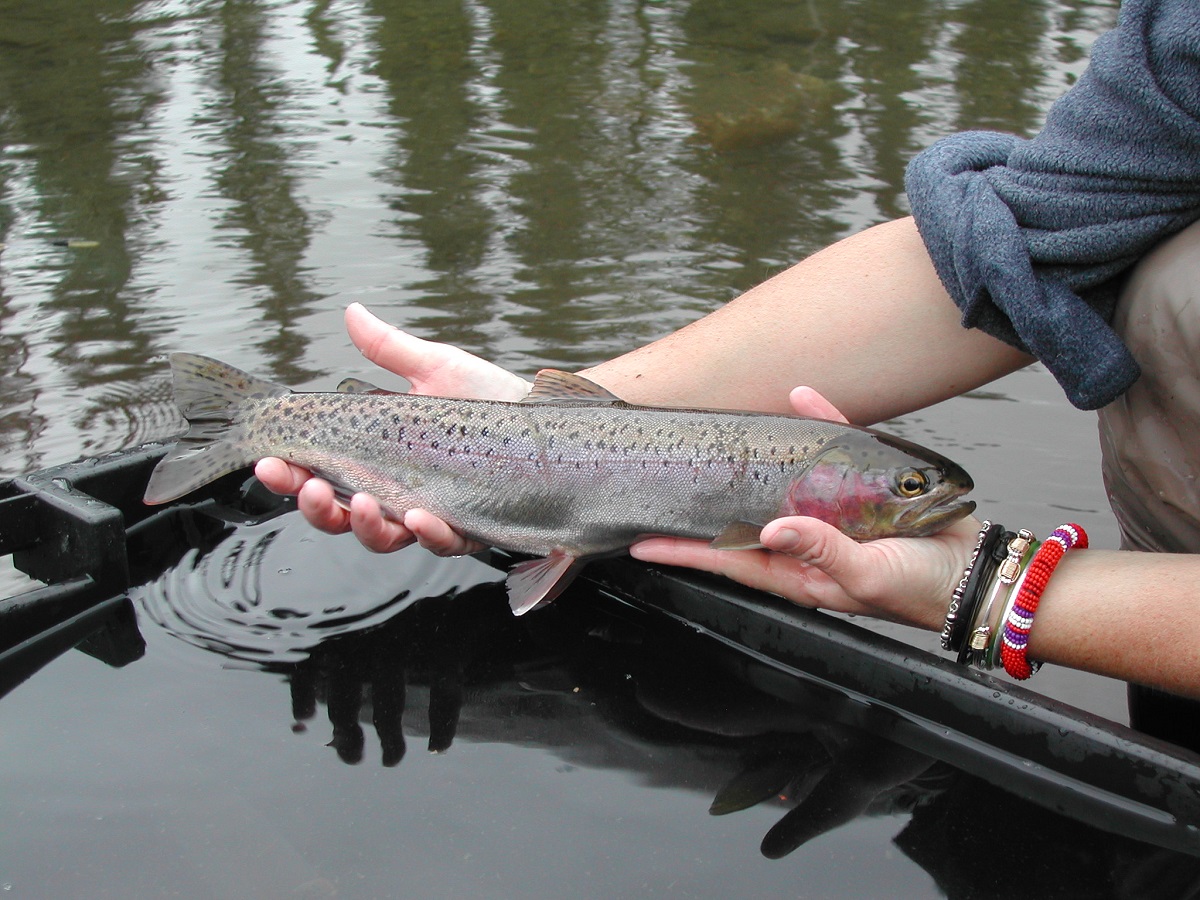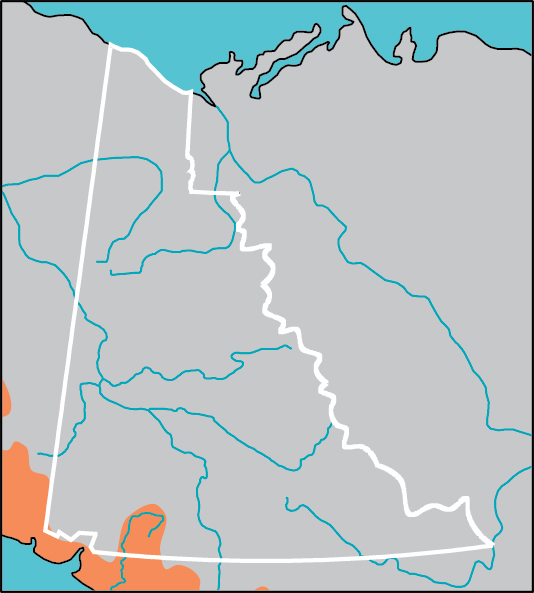
Name
- Common name: Rainbow Trout
- Scientific name: Oncorhynchus mykiss
- Order: Salmiformes
- Subfamily: Salmoninae
Also known as
Steelhead
Viewing opportunities
- Wild populations of Rainbow Trout in the Yukon are found only in the Tatshenshini-Alsek river systems.
- In McIntyre Creek and McLean Lakes near Whitehorse, Rainbow Trout were stocked in the 1950s and are now naturally reproducing populations.
- Rainbow Trout are also stocked in pothole lakes across the Yukon to provide accessible angling opportunities.
Description
- Typical trout-like body, rounded snout, large mouth, lack of teeth at base of tongue.
- Black spots on back, dorsal, adipose, and tail fins.
- A distinct light pink to vivid red lateral stripe is usually visible.
- Steelhead are much larger than Rainbow Trout.
Fast facts
- Length: Rainbow Trout are 20 to 40 cm and Steelhead are 50 to 75 cm
- Weight: Rainbow Trout are 1.3 to 1.8 kg and Steelhead are 3 to 10 kg
- Habitat: Rainbow Trout live in Freshwater and Steelhead are anadromous
Conservation status
- Yukon: S3 (Vulnerable)
- Global: G5 (Secure)
Yukon population estimate
Not determined.
Behaviour
Rainbow Trout occupy lakes, rivers, and streams while Steelhead use marine waters and rivers. They both spawn in the spring in flowing water, though unlike other Pacific salmon Steelhead do not necessarily die after spawning. Some migrate between the ocean and rivers to spawn several times. Rainbow Trout are short-lived, rarely living beyond age 8.
Diet
Freshwater shrimp and other crustaceans, aquatic insect larvae, molluscs and occasionally small fish.
Distribution

Trout and people
- Because of extensive stocking activities around the world, Rainbow Trout have the widest distribution of any freshwater fish because of extensive stocking activities around the world.